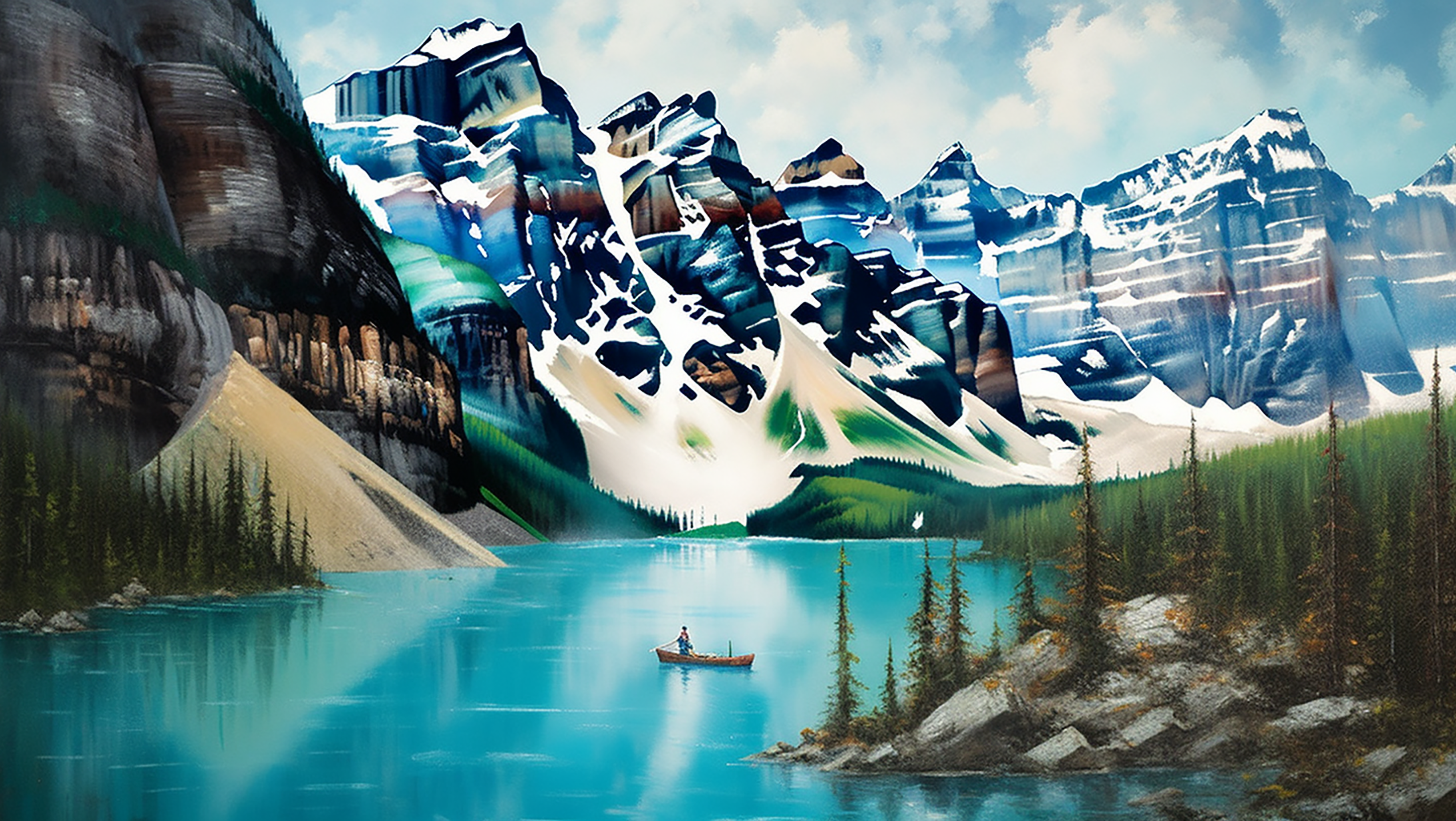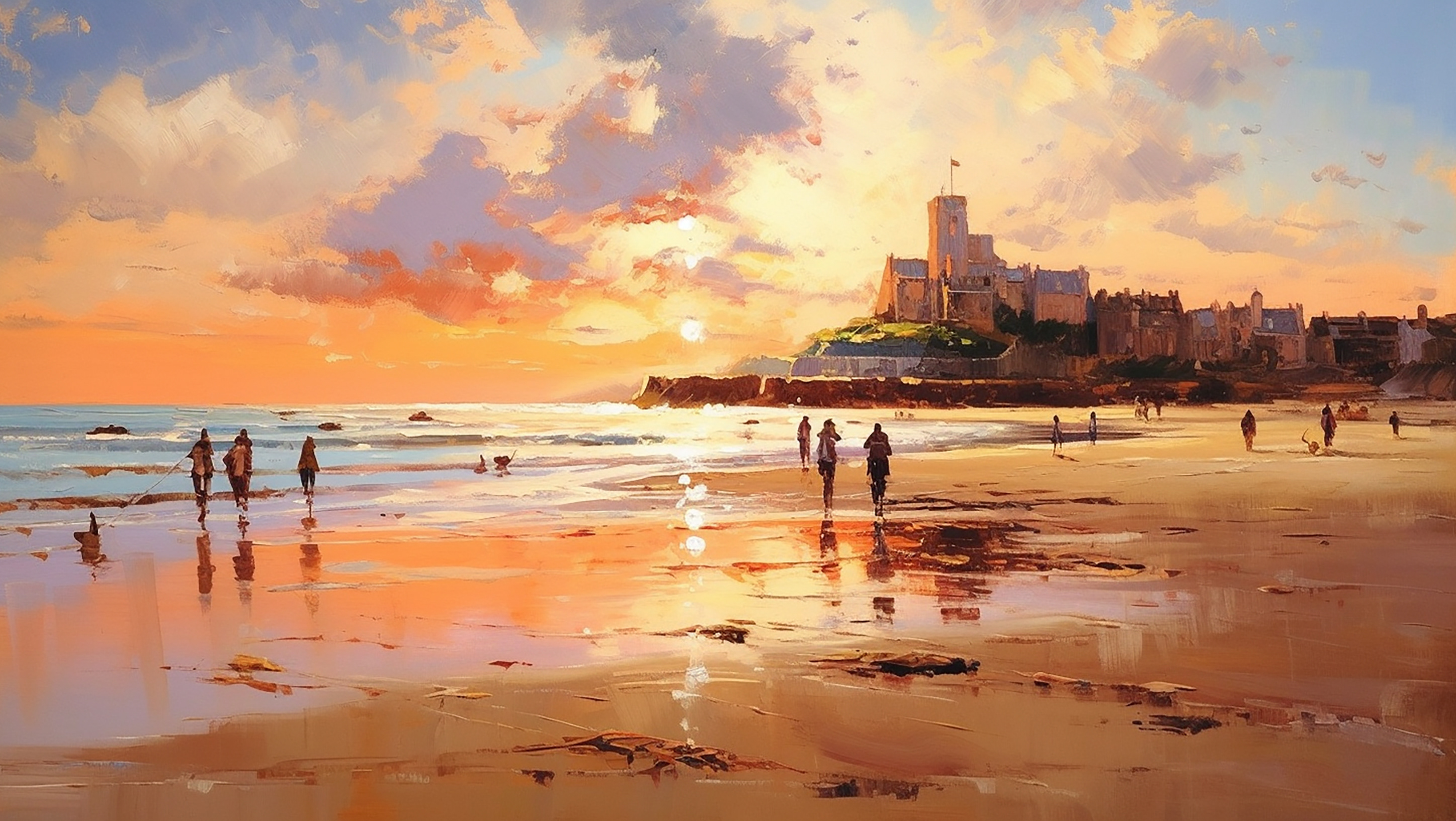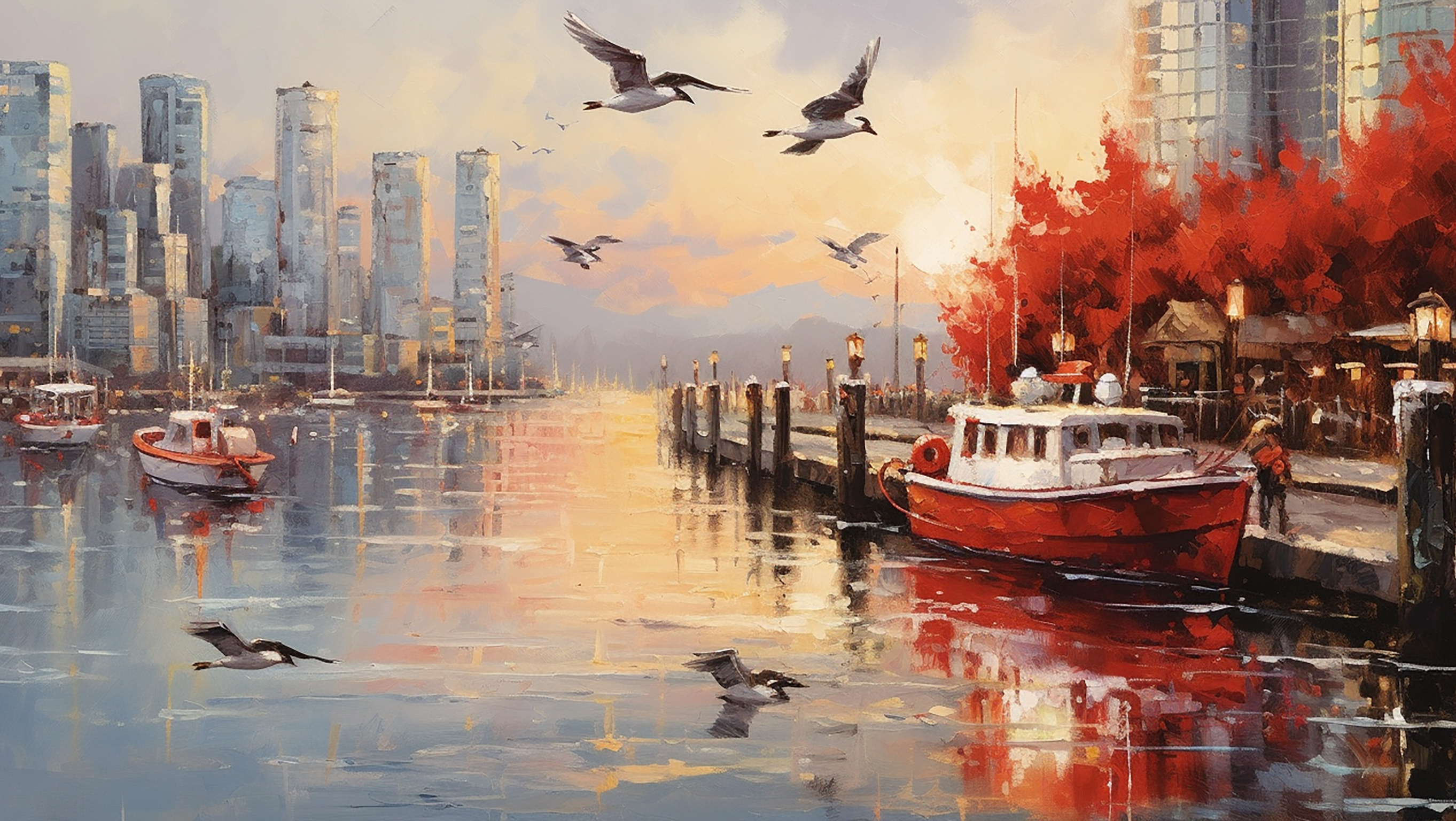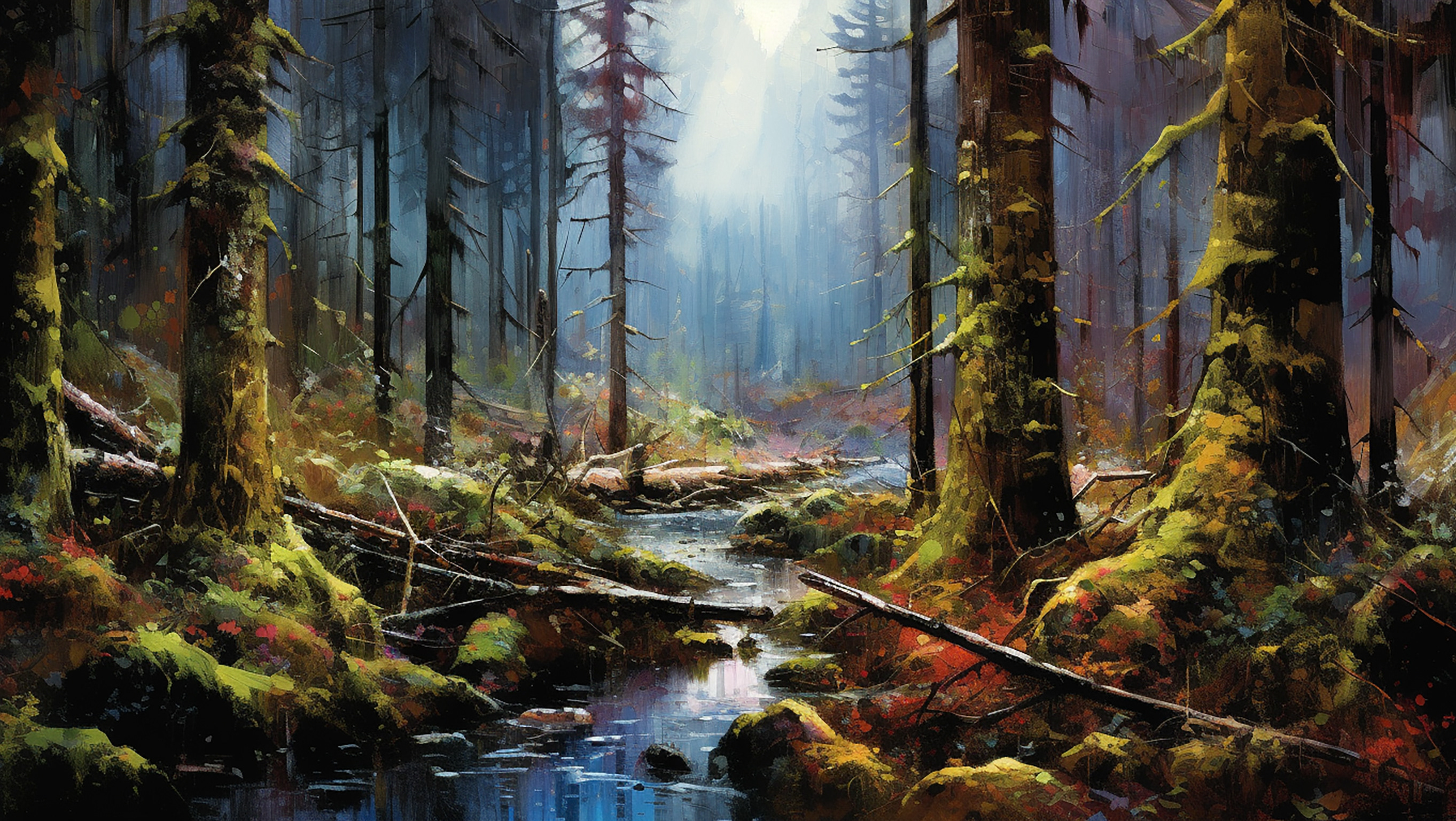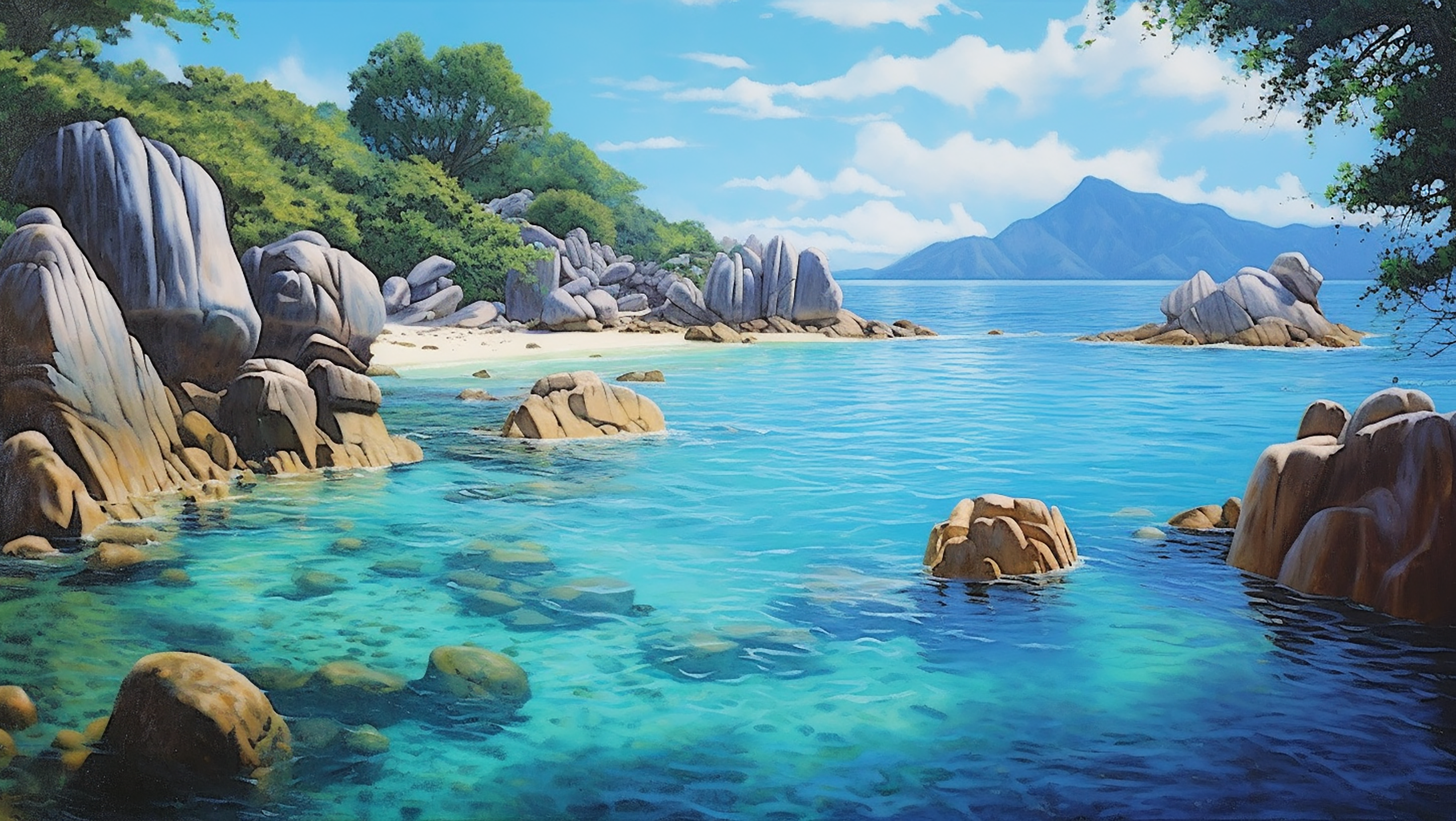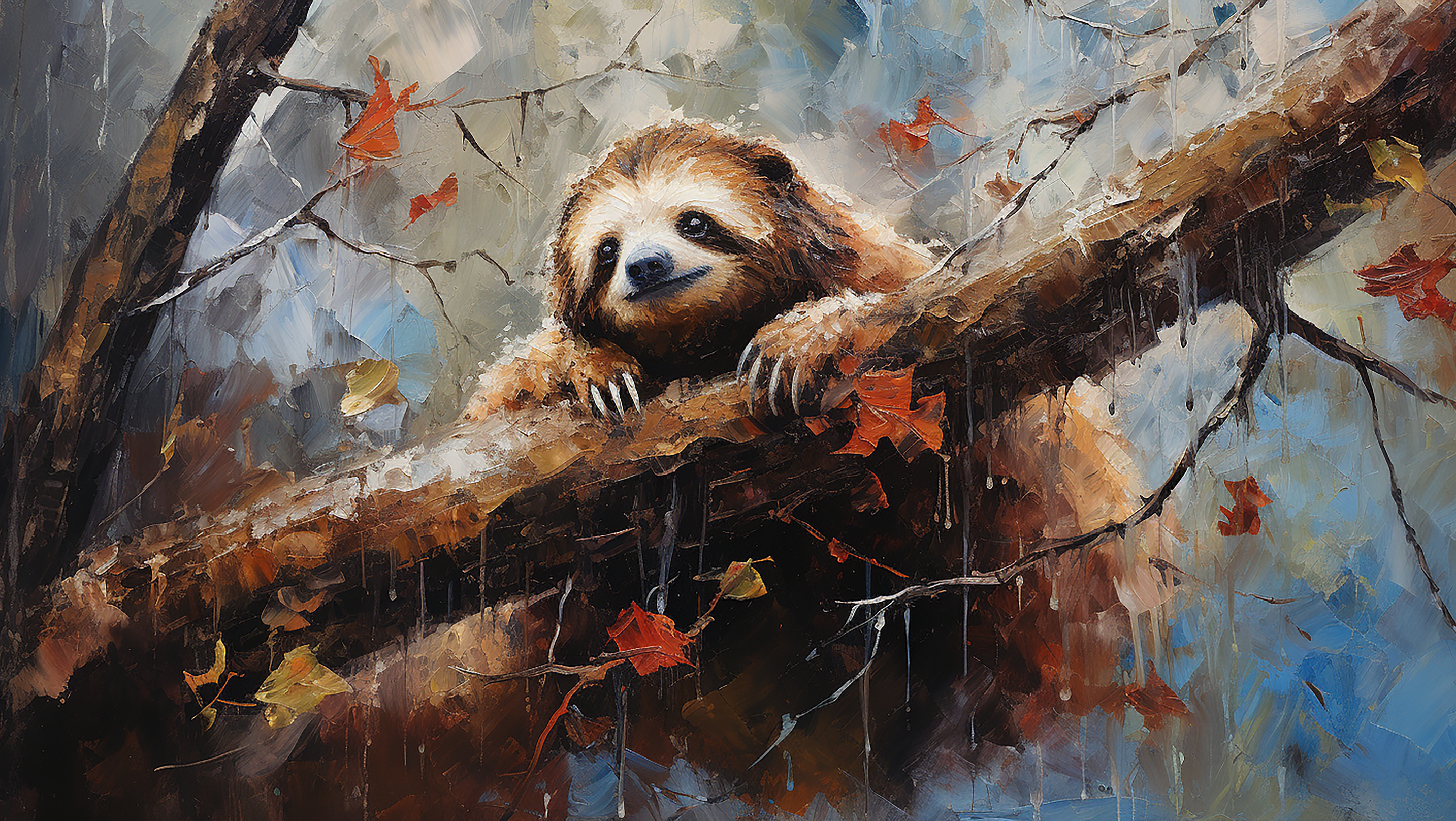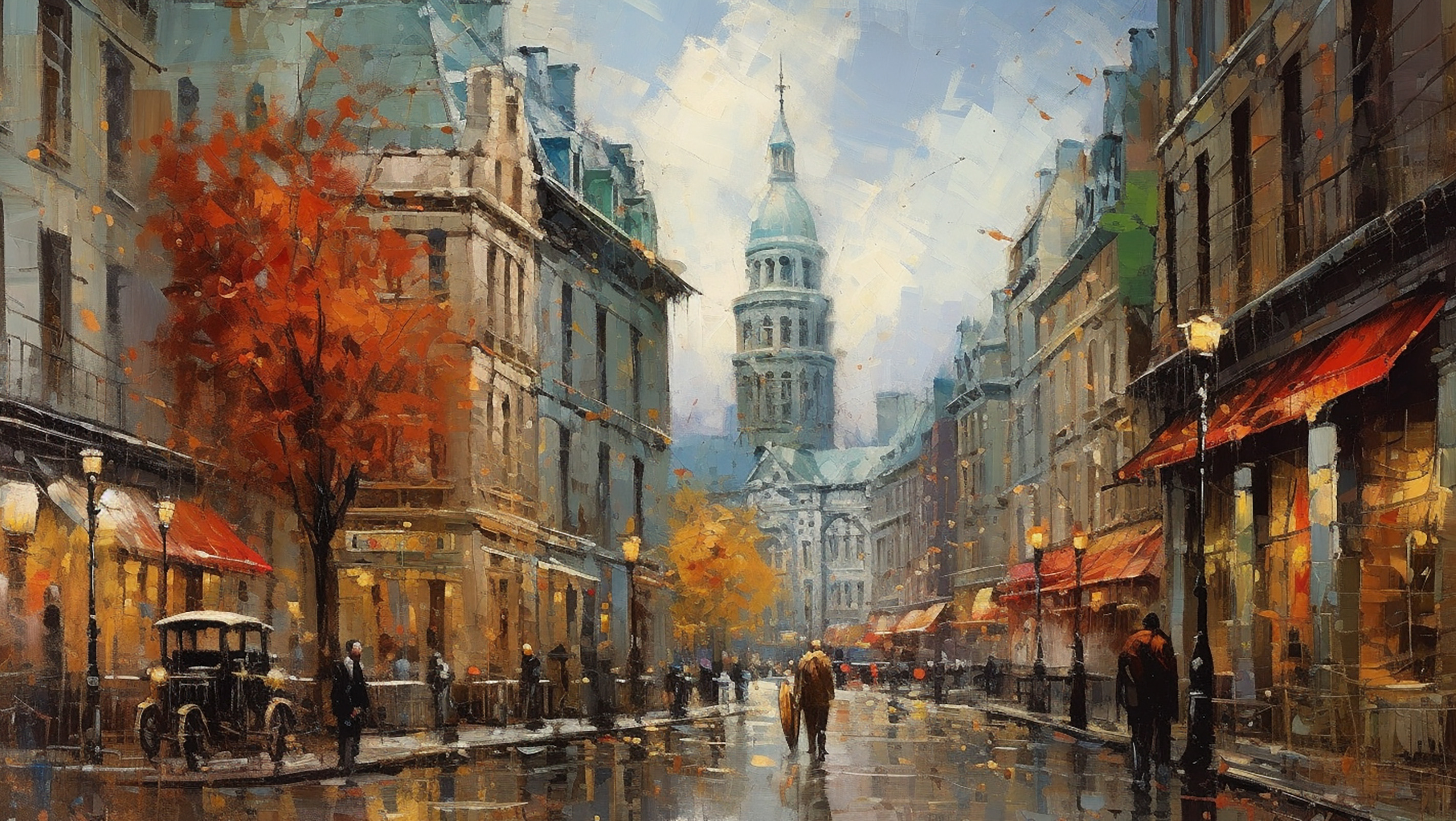A Train Journey Across America: From Chicago to San Francisco
The idea of travelling across America by train had been with me for a long time, dating back to my previous visit to California more than ten years ago. At that time, while planning a route to Yosemite National Park, I discovered the extensive network of long-distance Amtrak routes. Like veins beneath the skin, these routes cautiously made their way across America, taking a backseat in a country where cars reign supreme. Nevertheless, they crisscrossed the continent with large stitches, allowing visitors to quickly and conveniently reach various destinations.
Among all the railway routes in America, the most famous and promising for diverse landscapes is the Amtrak Zephyr route, which travels from Chicago to San Francisco in 52 hours. The train crosses numerous rivers, and national parks, and offers passengers the opportunity to capture stunning photographs with a wide range of landscapes.
The Zephyr route passes through the states of Illinois, Iowa, Nebraska, Colorado, Utah, Nevada, and California, allowing travellers to see the Midwestern plains, snow-capped mountain peaks, and the deserts of the Southwest. The train follows the Colorado River, where passengers can enjoy views of majestic canyons and mountain ranges. In Colorado, the train passes through the Moffat Tunnel, which is one of the longest railroad tunnels in the United States.
A major advantage of this route is the opportunity to enjoy panoramic views from special sightseeing lounge cars, where glass walls and ceilings provide a captivating 180-degree view of the surrounding landscapes.
However, these plans were shelved and forgotten for a long time until I stumbled upon this "atlas" page again while searching for a Via Rail map of Canada last September. Combined with a well-timed ticket purchase during the Christmas sales, this atlas page came to life and became a reality when I flew with United Airlines to the Great Lakes in Chicago.
The plan for this trip was compact enough to fit into my carry-on backpack: a day in Chicago, two days on the train to San Francisco, and after another day, perhaps inspired by sightseeing of Alcatraz, a 10-and-a-half-hour confinement on the plane for the return journey to London.
Chicago
Before the trip, I had a rather vague understanding of this city; all that had remained in my memory from glimpsed photos or articles that flashed before my eyes were images of a skyscraper city on the shores of Lake Michigan, famous for its harsh winters, which, fortunately, I wouldn't have to experience in early May. What I gleaned from the electronic guide on the plane, accompanied by predictably lousy aeroplane wine, formed the following plan.
Sometimes, when I have limited time in a city and want to form a basic impression of it, I like to climb its highest point and, from above, like a hawk scanning for prey, choose parts of the city that I can explore in more detail. In Chicago, that building is the Willis Tower, an elegant hare made of glass and concrete soaring above downtown. The Willis Tower, formerly known as the Sears Tower, was built in 1973 and was the tallest building in the world at that time. At 442 meters high, this skyscraper now only falls behind some of the planet's tallest buildings. However, it remains the tallest building in the United States outside of New York City.
On the 103rd floor of the Willis Tower is the Skydeck observation platform, offering panoramic views of the city and Lake Michigan. One of Skydeck's unique features is "The Ledge" – glass balconies extending from the building's wall, allowing visitors to stand on a transparent floor and experience the exhilarating thrill of height.
At least, that's what the advertisement promised.
In reality, I would say, it left a mixed impression. On the one hand, the entire city seemed to be at your fingertips from the observation deck. Having managed to get a ticket for sunset, I was able to see the city in two tones: black and yellow, illuminated by night lights, and pinkish-orange, reflecting the glow of the setting sun. On the other hand, the observation deck itself was predictably commercialised: the glass windows were specially designed to reflect the glare from numerous souvenir shops, squeezed into every possible nook and cranny, and the balcony attracted a huge queue of people eager to take photos according to the recommendations of banal advertising brochures.
Nevertheless, demonstrating as much agility as possible to avoid catching reflections in the lens, I attempted to take several panoramic shots of the view below. Finally, admitting defeat to the encroaching jet lag, I headed to sleep at my hotel, located closer to the shores of Lake Michigan.
Departure
The morning walk from my hotel to Union Station, where Amtrak trains depart, could have taken about half an hour, but my plans included stocking up on sleeping necessities for the journey at a local Macy's first, rather than relying on what the train would offer. After all, I had to travel for 52 hours, including two nights, and I wanted to arrange as much comfort for myself as possible. In addition, seemingly deciding to remind me of London weather, Chicago was hit by a cold downpour.
At times, the path went under strange, rusted metal structures, seemingly serving as elevated railway tracks, somewhat reminiscent of London's DLR. They loomed over the roadway like a steampunk architect's creation, somehow reminding me of scenes from the decent post-apocalyptic TV series "The Last Of Us." It seemed like the perfect construction to ambush a wandering Pedro Pascal below, but alas, he was nowhere to be seen among the few people rushing about their business on a Saturday and a couple of unhurried homeless individuals sheltering from the rain under these structures.
The station, like the trains, tried to make itself as inconspicuous as possible from the outside, but inside the several tangled labyrinths of underground halls and rooms, it bustled with activity. Chicago serves as a hub for departing Amtrak trains, branching out like cracks from a meteorite strike on a frozen lake, in all directions by railroads, and thus, gathering diverse passengers who heeded the call of the queen bee in the form of a conductor and sending them off like worker bees, in one direction or another from the bustling hive.
As in California once, the passengers represented an interesting, atypical American cross-section of society. There were groups of what appeared to be Mormons in their straw and black hats and clothing as if they were about to step on stage and dance while singing something country-style. There were also groups of shy Japanese tourists with backpacks adorned with anime drawings only they could understand, as well as probably the noisiest groups of Americans who seemingly did not plan to travel the entire route but were only heading to some stations they needed along the way. Fearing that they wouldn't have enough time to chat on the train, they loudly discussed some banal nonsense among themselves.
Following the guidebook's recommendations, I took a seat by the window on the right side of the train's second floor, which promised the best views when crossing the Rocky Mountains. However, I decided to settle in the panoramic car, which had advantages over the regular car mainly due to the swivelling chairs facing the windows and better lighting from the windows in the roof of the car, seemingly designed by a birdwatching club rather than railway designers, because there was nothing to see overhead except for the occasional crows flying over the train.
Outside the windows, agricultural fields flashed by, where instead of the sheep and cows typical for Europe, herds of agricultural machines grazed, diligently burying something in the field soil, sometimes raising clouds of dust like stampeding horses. The fields were interspersed with neatly arranged, identical wooden houses, lacking the squalor of English terrace houses but also lacking the charm of old Europe, surrounded by smoothly trimmed lawns without fences.
In theory, passengers were supposed to spend a few hours in the panoramic car and then return to their seats to allow others the opportunity to enjoy the views, but perhaps because the train was not fully booked or the views were not yet particularly special, there were still free seats. So I decided to spend the evening opposite the agricultural lands flickering outside the window, watching as our train, moving westward, unsuccessfully tried to catch up with the setting sun disappearing into the clouds.
Three hours into the journey, there was some excitement in the car when we crossed the Mississippi River, which, although massive, was not particularly noteworthy in my opinion.
As the evening turned into night, I increasingly thought about returning to my seat and trying to settle in for an early sleep, on the one hand, to adjust to the six-hour time difference, and on the other hand, to enjoy the more colourful landscapes promised by the guidebook tomorrow morning when our journey would pass through Denver.
Denver and the Rocky Mountains
Crossing through Illinois, Iowa, and Nebraska at night, and then half of Colorado, we were greeted by dawn amidst the fields to the east of Denver.
The landscape gradually became more hilly and rocky, with the rising sun illuminating the snow-capped peaks in the distance. Before venturing further into the mountains, which began about an hour past Denver, we had a one-hour stop at a station called Union Station. It seems that the imagination for naming local stations had suffered the same fate as Latin America and its Plazas de Armas.
Denver, the capital of Colorado and one of the highest-altitude cities in the United States, is known for its uniqueness and diversity. Located at an elevation of 1,609 meters above sea level, Denver is often referred to as the "Mile High City." Majestic mountains surround the city, creating a unique landscape and offering a multitude of opportunities for outdoor activities and entertainment.
That's what the guidebook claimed, but the area around the station, visible from the train window, did not look appealing.
It was possible to get off the train and stretch our legs at the station, but I chose to devote that time to a simple breakfast instead.
As we moved further from Denver, our train slowly ascended higher and higher into the mountains along winding paths that snaked around the hills. The road twisted so much that it sometimes seemed as if the train was moving in circles. From time to time, as if to completely confuse its tracks like a hare escaping a predator, the train would dive into tunnels, although not too long, and then resurface, revealing a panorama of snow-covered mountains and offering a tasting menu of this main course - the snow under the fir trees, which still hadn't melted even now, at the beginning of May.
About half an hour later, down in the canyon, an impressive dam came into view, massive in scale and height, which we could observe for quite a while, letting the oncoming trains pass by.
The mountains and soil took on a reddish-brown hue, likely to contrast with the remnants of white snow and to emphasise the low-growing coniferous forests below.
As we progressed further into the mountains, there was more and more snow, and it no longer hid under the fir trees but covered the banks of local streams along our route, sometimes even whiter than the snow-covered marshes and lakes. However, deciding to hide these snowy delights from our eyes, the train finally plunged for tens of minutes into one of the longest tunnels in the United States, generously leaving us time to guess in the darkness what kind of views would await us when it would emerge again somewhere in the middle of the Rocky Mountains. Emerging somewhere in a small town reminiscent of a ski resort at the end of the season, and picking up a few passengers at a modest wooden stop, the train, relieved to have crossed the first stretch of the Rocky Mountains, began to pick up speed on a more level plateau.
New mountains loomed in the distance, but here on the rolling plain, the warm spring sun finally managed to melt the remnants of snowdrifts. The rivers swelled, carrying turbulent, tea-like waters down to the Colorado River, seemingly replenished by the actively melting snows higher up in the mountains.
At some point, the purpose of the panoramic windows in the roof became clearer as we descended into a small canyon, observing how the rocks on both sides seemed to prepare to take us in their clutches.
It occurred to me that, in general, it might have been more sensible to fly directly to Denver and board the same train there, thus giving myself an extra half day and night "at liberty" outside the carriage and, in principle, not missing anything of great significance in the landscapes.
The Colorado River
Somewhere around noon, our train decided not to forge its path when there was already one laid by the river, and began to follow along the banks of the Colorado River for a couple of hours, flowing leisurely among the red-yellow banks with small rapids. Predominantly, it seemed that family groups floating downstream without much effort, navigating the occasional rapids on inflatable rafts, were put to shame by family groups of geese with goslings, navigating the river without any swimming aids.
The banks would narrow and then widen, sometimes becoming redder, sometimes resembling sandstone hills.
In order not to let passengers fall asleep while looking out of a single window, the train frequently jumped from one side of the river to the other, forcing passengers to move between the sides of the carriage in search of better views.
At some point, the surrounding cliffs decided to put an end to the chaos and, growing skyward, tightly squeezed the train on both sides, leaving only a narrow passage below where, by coincidence, the rails were laid.
The scenery increasingly reminded me of what I had seen in March, as we traveled further through the territory of Colorado towards Utah. Salt Lake City, however, still loomed quite a distance away along the route ahead, leaving nothing else for the "groups in black and straw hats" to do, along with everyone else, but to admire the landscapes outside the window.
In less than half an hour, the train managed to escape the fate of being crushed at the edge of the canyon and jumped onto a plateau, seemingly levelled by the waters of the Colorado River. The river visibly widened before our eyes, meandering in dance and forming vast, shrub-covered islands. On one of these islands, I noticed a group of grazing deer.
However, the landscapes became less dramatic, revealing traces of human activity from time to time.
According to the route itinerary, we were supposed to reach a place called Ruby Canyon by sunset. I had never heard of it before, but looking out the window a couple of hours before sunset, the reddish rocks began to fully match the name.
From Nevada to California
The morning of the third day greeted me with a yellowish sun illuminating Nevada’s vast, yellowish-green prairie landscape stretching to the horizon. Human activity was hardly noticeable, with only a few grazing cattle amidst low-lying, stiff-leaved shrubs as reminders of human presence. The soil seemed to be saline, as there were no attempts to grow anything, and among the sparse, dried-up grass, patches of unvegetated land with whitish sand, seemingly covered with a layer of evaporated salt, were revealed.
In the distance, gentle mountains covered with a similarly muted yellowish-green carpet loomed. They did not appear to get any closer despite the train's movement. We had crossed another time zone overnight, gaining an additional hour in the morning, so sleep did not come easily, even though the clock showed 6:30 a.m. Gradually, even the rare dried-up shrubs disappeared, giving way to a vast, yellow desert speckled with white patches of salt stretching from horizon to horizon.
In some places, the white layer of salt covered the entire surface. If it weren't for the occasional clumps of grass among it, one might think we were looking at a lake covered with dirty ice. The occasional shallow, small bodies of water held no interest for local flora and fauna due to their highly concentrated saline solution.
As our journey approached the city of Reno, on the border of Nevada and California, the desert loosened its grip. Here, in the foothills of the Sierra Nevada, trees and a river appeared, slightly overflowing its banks as if during spring flooding, and the inviting snow-capped mountains loomed on the horizon.
Sierra Nevada
Having rested for the last half day on the flat plains, our train, like a tourist who accidentally picked us up in their hiking backpack, began to climb the mountains with a pitiful wheel squeak. It rose higher and higher, like a doomed mule forced to carry its load uphill regardless of its fatigue.
Cosy houses in the foothills, located almost level with the river, caused concern, imagining the spring floods. They were occasionally adorned with blooming cherry trees, which I had seen abundantly in the suburbs of Chicago. Probably, the local railways, unconditionally losing in comparison with the impeccable Japanese Shinkansen in terms of punctuality and condition, decided to atone for their guilt before the Japanese tourists on the train, reminding them of their homeland with Sakura.
Meanwhile, the landscapes became more and more captivating. The train, using the old tactic proven on the banks of the Colorado River, instead of making its way, followed the extension of the local and quite turbulent river, from the rapids of which Colorado kayakers and geese retreated.
Passing through a charming Californian town that reminded me of the Canadian Banff, we once again began to climb higher and higher among the snow-white slopes, covered in places with still half a meter of snow, which, despite melting rapidly, continued to lie on the ground.
Streams flowed down the slopes, and before the question arose as to where all this water would go, the majestic Donner Lake opened before us, adorning the white-green landscape with its dark greenish-blue waters.
As if wanting to give our eyes time to rest from the sparkling snow in the sun, our train plunged into a four-mile tunnel, only to reemerge among more snowy landscapes. The cosy houses we passed by were sometimes snowed in from the north side, almost to the roof, leaving room for imagination about what usually happens here during the winter. Nevertheless, gradually the train, having overcome the pass, began to descend from the Sierra Nevada mountains. The striking differences became immediately noticeable: snow was found only in patches in the shade, and pine forests were increasingly giving way to deciduous species. Those coniferous trees that remained became long-needled, more sprawling, and fluffy.
Along with the renewal of the entourage, the soil also began to change its colour - from the dark rocky slopes at the top to an increasingly orange-red, made up of smaller stones and clay as we descended.With each passing minute, the pines, seemingly offended by having to grow lower on the slope, tried to compensate with their growth upwards. Occasionally, they shaded separate houses with blossoming fruit trees in the gardens. Here, the winter peaks of the mountains seemed like something imaginary and unreal.
The last hours of the journey unfolded amid verdant, albeit not overly dramatic valleys, occasionally intersected by viaducts leading to the picturesque town of Emeryville, nestled in the vibrant suburbs of San Francisco. There were only a few stops left before reaching the town of Emeryville.
As we left the suburbs near the Sacramento stop, the scenery changed drastically: instead of the beauty of national parks, garbage dumps increasingly appeared along the roads. Here and there were scattered chaotic tent cities, seemingly built from anything that could be found in the dumps. Along the highways stood battered trailers with inhabitants rummaging through their belongings scattered around...
I had read reviews stating that San Francisco was not what it used to be, but it was too early to judge the city itself, which I had not yet reached.
We were transferred from Emeryville to a bus for the final hour-long segment of the trip, as the train does not go directly to San Francisco.
San Francisco did not appear as disheartening as some remote areas. Having settled in a hotel at Fisherman's Wharf, I decided to change my initial plans of spending the next day in the city before my flight and instead opted for a half-day tour of Muir Woods.
In Muir Woods, visitors can marvel at the ancient coastal redwood trees, some of which are over 800 years old and reach heights of up to 250 feet. This national monument, established in 1908 by President Theodore Roosevelt, covers nearly 554 acres and offers a tranquil haven for nature enthusiasts.
After completing the circular route in about an hour and a half, I still had an hour-long stop in Sausalito.
The picturesque town of Sausalito, nestled in Marin County, boasts stunning views of the San Francisco Bay and skyline. Visitors can stroll along the waterfront, explore charming boutique shops, or dine in various restaurants offering diverse cuisine.
Finally, I took one last look at the iconic bridge before heading to the airport.
